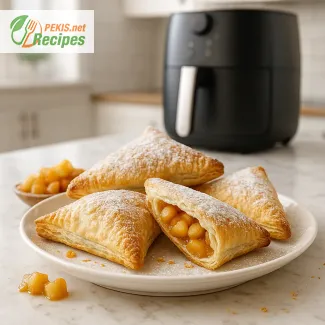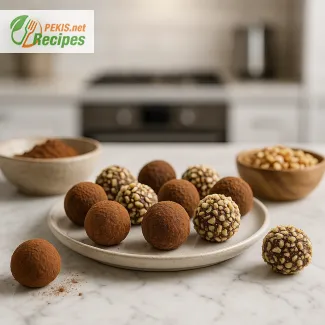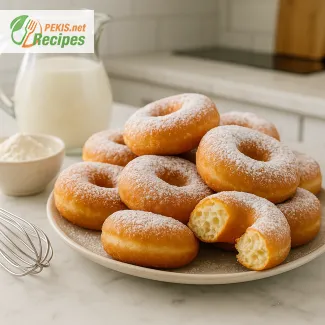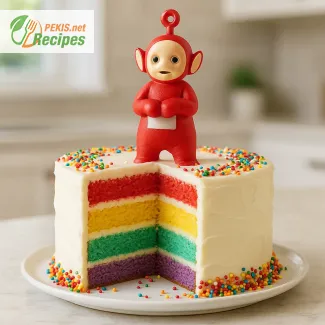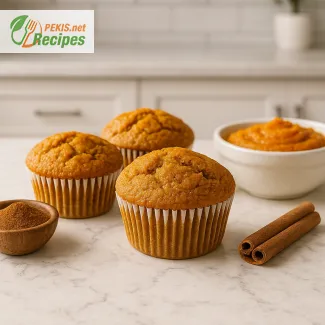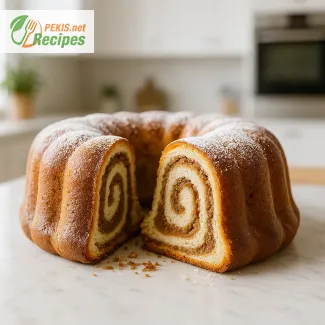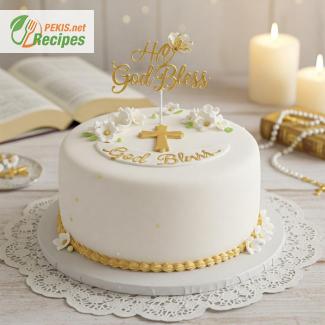
Celebrate a Sacred Moment with the Perfect Homemade Communion Cake
A beautiful dessert to mark a cherished religious milestone
The First Holy Communion is a moment of deep spiritual significance in many Christian families. It symbolizes a child's first reception of the Eucharist and is often accompanied by heartfelt celebrations. Amid the ceremonial attire, family gatherings, and religious customs, one thing stands out on the festive table: the First Communion cake. More than just a dessert, it is a centerpiece that reflects tradition, reverence, and love.
A well-crafted Communion cake goes beyond flavor—it's a tribute to faith and family. Whether adorned with a cross, chalice motifs, or delicate white flowers, it’s a confection that balances elegance and meaning. This article guides you into the inspiration and emotion behind creating such a special cake at home—crafted not only to delight the senses but to honor the occasion itself.
A homemade First Communion cake brings a personal touch to the event. Unlike store-bought alternatives, baking it yourself lets you infuse the cake with family traditions, spiritual symbolism, and customized decorations that reflect the child's journey. It becomes more than a dessert—it becomes a memory in itself.
Many families opt for white or vanilla sponge cakes, as they symbolize purity and are easy to pair with soft fondant or buttercream finishes. However, today's modern bakers are also experimenting with flavors like lemon, almond, or chocolate, all while keeping the exterior classic and respectful. Soft pastel shades, delicate piping, edible rosaries, and gold or silver accents are popular decorative choices, each bringing their own message of faith and joy.
Parents and godparents often take special care in planning the Communion celebration. The cake frequently becomes the highlight of the reception, where children beam with pride standing beside it. Photography is another important part of the day, and a stunning Communion cake design helps preserve those joyful memories in beautifully composed photos that last a lifetime.
If you're a parent, baker, or relative preparing for this sacred occasion, you likely want a cake that blends traditional design with heartfelt details. This is where homemade options shine. Baking your own cake gives you complete creative control over flavors, shape, color palette, and even message inscriptions. A simple cross-shaped cake, for instance, can be elevated with floral piping, a scripture quote, or the child’s name elegantly placed in icing.
Modern trends in First Communion cakes emphasize minimalism and soft elegance. Think of white fondant with subtle lace patterns, gold-dusted crosses, or even edible wafer-paper doves. While some families prefer classic round or rectangular tiers, others go bold with cross-shaped cakes or individual Communion-themed cupcakes for guests. The versatility makes it possible to create something unique yet respectful.
Another important aspect to consider is the symbolism. White and gold dominate the Communion color palette, representing purity and divinity. A single candle, miniature Holy Bible topper, or rosary placed on the cake speaks volumes in terms of reverence and belief. Personalized elements like monograms or photos printed on edible sugar sheets can also bring warmth to the design, showing how far baking has come in blending tradition and innovation.
This cake is not just meant to be admired—it must also be delicious. Choosing a moist, fluffy sponge and a balanced filling—such as raspberry preserve with white chocolate buttercream or lemon curd with vanilla frosting—ensures the flavor matches the occasion. Children and adults alike will appreciate the effort and taste, making it a moment shared not only in faith but in joy.
Ultimately, preparing a cake for such a milestone isn’t simply about flour and sugar—it’s about honoring a child's spiritual journey with a loving gesture. With this recipe, you’ll find the perfect balance between tradition, taste, and beauty, ensuring the First Communion remains a cherished day in every sense.
In the sections below, you’ll discover step-by-step instructions to create a First Communion cake that’s not only easy to make but visually stunning and rich with meaning. From choosing the right cake base and flavor to applying flawless decorations and personalizing it with symbols of faith, everything you need is here to help you craft a masterpiece worthy of the celebration.
- Preheat the oven to 175°C (350°F). Grease and line a 9-inch round or cross-shaped cake pan with parchment paper.
- Cream the butter and sugar in a large mixing bowl using a hand or stand mixer until light and fluffy (about 3–4 minutes).
- Add the eggs one at a time, mixing well after each addition.
- In a separate bowl, sift together the flour, baking powder, and salt.
- Gradually add the dry ingredients to the wet mixture, alternating with milk. Mix until fully combined.
- Add the vanilla extract and mix again until smooth.
- Pour the batter into the prepared cake pan and smooth the surface with a spatula.
- Bake for 30–35 minutes or until a toothpick inserted into the center comes out clean.
- Let the cake cool in the pan for 10 minutes, then transfer it to a wire rack to cool completely.
To make the buttercream:
- Beat the softened butter until creamy (2 minutes).
- Add powdered sugar gradually, mixing on low until fully incorporated.
- Add the cream, vanilla extract, and salt, and beat on high until fluffy (3–4 minutes).
Assembling the cake:
- Once the cake is completely cool, trim the top if needed to level it.
- Slice the cake horizontally into two layers, if desired, and fill with a layer of buttercream.
- Spread a thin crumb coat of frosting all over the cake and refrigerate for 15 minutes.
- Apply a final thick layer of buttercream or cover with rolled white fondant.
- Decorate with religious symbols, flowers, or personalized name toppers.
Customizing Your First Communion Cake: Smart Tweaks for Better Flavor and Texture
Expert tips to elevate your homemade cake beyond the traditional recipe
Preparing a First Communion cake at home is already a meaningful gesture, but enhancing the recipe with thoughtful adjustments can elevate it from simple to spectacular. Whether you're looking to improve texture, flavor depth, aesthetic appeal, or nutritional profile, there are several ways to make your cake even more impressive—while keeping it aligned with the elegance and reverence of the occasion.
Flavor enhancements that add depth and character
One of the simplest yet most effective ways to enhance your cake is by infusing the sponge with complementary flavors. The traditional vanilla base is classic and well-loved, but adding almond extract (2–3 ml / ½ tsp) alongside the vanilla can give it a subtle, sophisticated aroma. Almond pairs beautifully with vanilla and elevates the flavor without overpowering the simplicity of the cake.
Another option is to add lemon zest or orange zest to the batter. Just a teaspoon can transform the cake’s personality, providing a fresh, citrusy note that brightens the palate. These flavors are especially welcome in spring and summer celebrations, when fresh and light profiles feel seasonally appropriate.
For a richer version, incorporating melted white chocolate (50 g / 1.75 oz) into the batter adds a buttery-smooth depth that enhances sweetness naturally. It’s an elegant choice for more indulgent tastes.
Improving the sponge texture with simple ingredient swaps
To achieve a more delicate and moist crumb, consider replacing a portion of the all-purpose flour with cake flour. For example, use 200 g of cake flour and 50 g of all-purpose flour instead of 250 g all-purpose flour. This swap reduces gluten development, resulting in a finer, more tender texture.
Another tip is to add sour cream (60 g / ¼ cup) or Greek yogurt to the batter. These ingredients contribute both moisture and acidity, balancing sweetness and improving mouthfeel. If you choose this addition, reduce the amount of milk slightly to maintain the correct liquid ratio.
To enhance leavening and ensure an even rise, make sure your baking powder is fresh and sift it together with the flour. You can also beat the egg whites separately and fold them into the batter for an airier, lighter sponge.
Why homemade is always better
A homemade First Communion cake allows full control over ingredients, ensuring higher quality, no artificial preservatives, and complete customization. Beyond health and quality, baking at home adds emotional value—it becomes part of the memory, especially when family members participate in the process. Even a simple decorating session with children can turn into a cherished moment.
Home-baked cakes also tend to be more flavorful, as they can be served fresh and warm, and you can adjust the sweetness or richness to suit your family’s preferences. You can also customize decorations, from script lettering to personalized themes that reflect the child’s personality or spiritual journey.
Common mistakes and how to avoid them
One of the biggest pitfalls is overbaking the cake, which leads to dryness. Always check the cake five minutes before the suggested time and use the toothpick test for accuracy. The pick should come out with a few moist crumbs, not clean or wet.
Another mistake is not properly creaming the butter and sugar. This step incorporates air into the batter and helps with leavening. Beat for at least 3–4 minutes until the mixture is pale and fluffy.
Uneven layers or domed tops are also common. To avoid this, level your cake batter with a spatula before baking and consider using cake strips to ensure even heat distribution around the pan.
When decorating, it’s crucial to allow the cake to cool completely before applying buttercream or fondant. Warm cakes will melt the frosting, making it difficult to achieve a smooth, elegant finish.
Healthier ingredient alternatives for conscious baking
For those seeking a healthier twist, there are plenty of adjustments that maintain flavor and texture:
- Replace part of the sugar (50–100 g) with natural sweeteners like honey or maple syrup, but adjust dry ingredients accordingly.
- Use whole wheat pastry flour for more fiber while keeping a soft texture.
- Substitute plant-based milk (like almond or oat milk) for a dairy-free version.
- Swap butter with coconut oil for a different fat profile and subtle flavor twist.
- Opt for reduced-sugar buttercream by cutting back on powdered sugar and using a touch of salt and vanilla to balance flavors naturally.
If you're decorating with fondant, you can also look for sugar-free or gelatin-free alternatives, especially for children with dietary restrictions.
Make it memorable with creative presentation
Even small changes in presentation can transform a traditional cake into something memorable. Try baking in a cross-shaped pan, or using tall cake rings for a modern, elegant aesthetic. If time allows, creating a two-tier cake adds a sense of grandeur, perfect for marking such a significant religious milestone.
Decorative additions like edible lace, sugar pearls, or hand-piped floral borders can give your cake a luxurious, professional look. Personalized fondant toppers or subtle gold leaf accents also enhance the visual impact without overcomplicating the design.
Improving the traditional First Communion cake recipe doesn't mean straying far from its essence. Instead, it's about understanding what each ingredient brings to the table and how small changes can make the cake softer, more flavorful, or visually stunning. Whether you're aiming to make it healthier, more elegant, or simply more memorable, the key is balance and attention to detail.
Ultimately, every tweak should serve the purpose of honoring the occasion. When love and care go into the preparation, even the simplest cake can become the most meaningful.
Contains allergens: Eggs, milk, gluten (wheat)
To make it allergy-friendly:
- Egg-free: Replace each egg with 60 ml (¼ cup) applesauce or 1 tbsp ground flaxseed + 3 tbsp water.
- Gluten-free: Use a gluten-free all-purpose flour blend with xanthan gum.
- Dairy-free: Use dairy-free margarine and plant-based milk (like almond or oat milk).
- Vitamin A: 420 IU – supports vision and immunity
- Vitamin D: 12 IU – helps calcium absorption
- Calcium: 50 mg – essential for bones and teeth
- Iron: 1.5 mg – important for red blood cell formation
- Magnesium: 10 mg – supports muscle and nerve function
- Potassium: 95 mg – helps regulate blood pressure
- Vitamin E: 1.1 mg – protects cells from oxidative stress
- Beta-carotene (from eggs and butter): 50 µg – supports immune health
- Flavonoids (from vanilla): trace – may contribute to anti-inflammatory benefits
